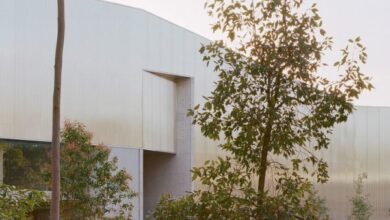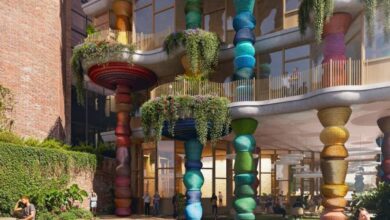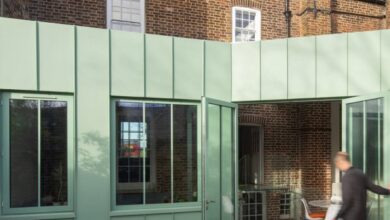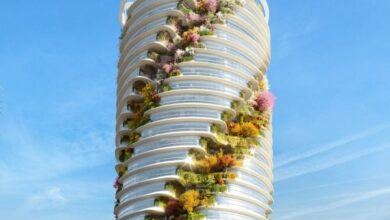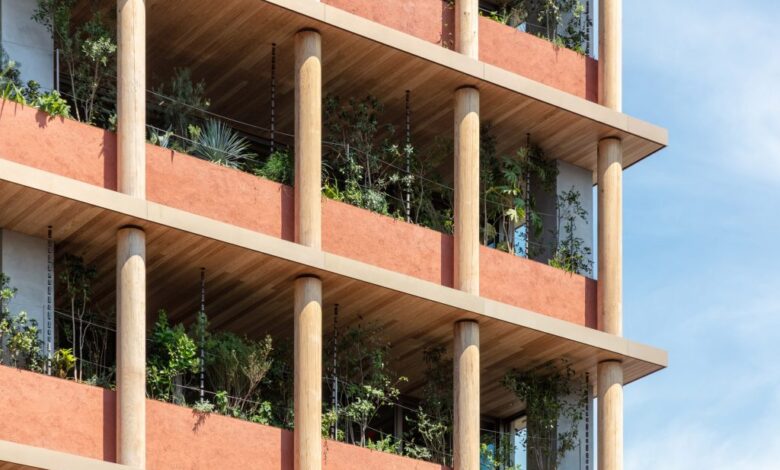
Nori Architects adds cedar-log columns to Good Cycle Building
[ad_1]
Japanese studio Nori Architects has used whole cedar logs, earth plaster and waste materials to retrofit the 30-year-old concrete framed Good Cycle Building in Nagoya prefecture
Shortlisted in the rebirth project category of Dezeen awards 2022, the renovation was completed for construction company Asanuma Corporation as a flagship office that would demonstrate their commitment to environmentally-friendly retrofits.
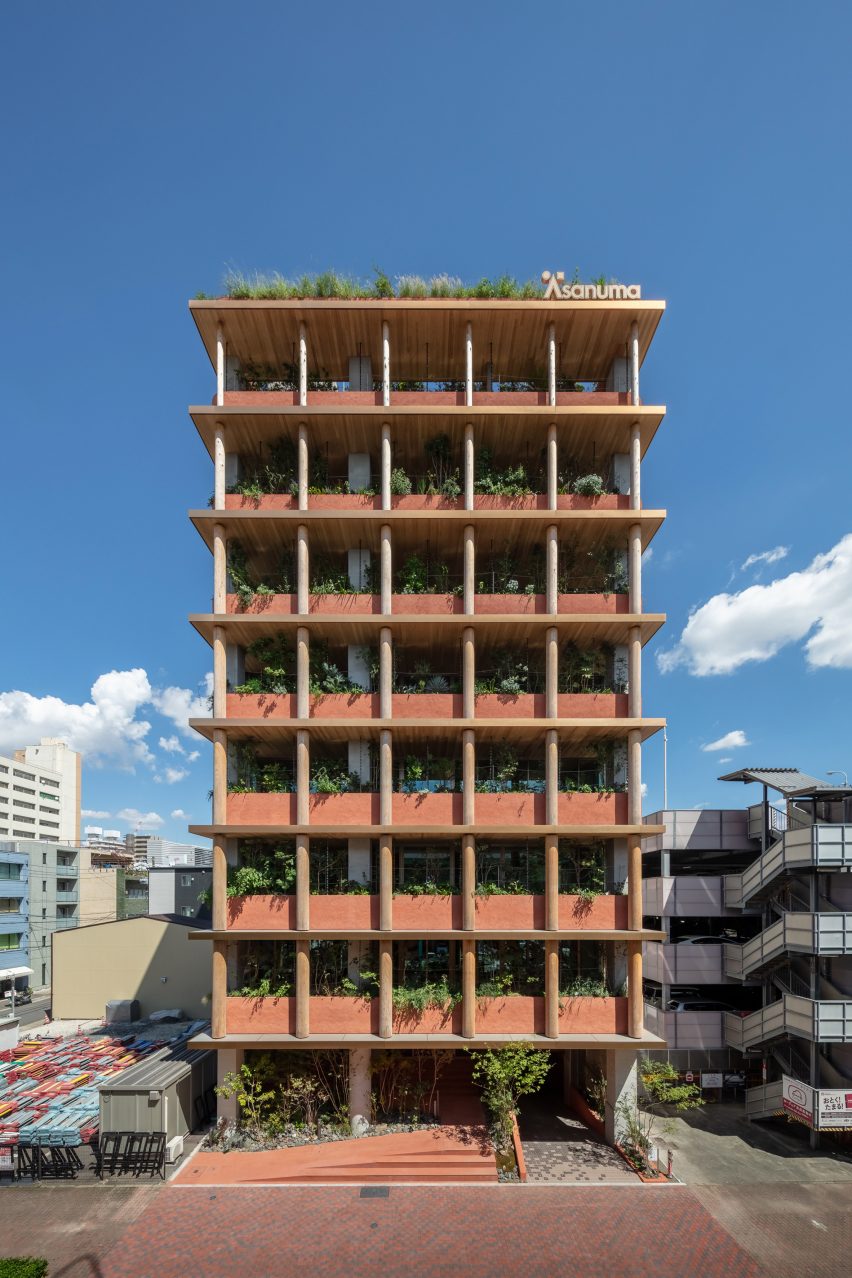
“In recent years, the demand for mid-sized, high-end office spaces has increased in Japan, and several real estate companies have launched tier own office development projects,” explained the studio.
“The Good Cycle project responds to this trend by renovating a 30-year-old building, the age many Japanese office buildings fall under.”
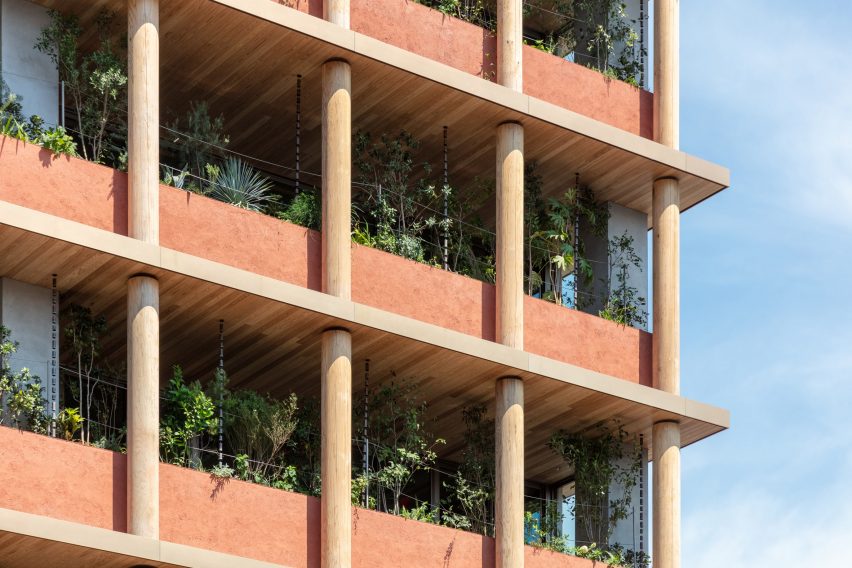
Retaining the building’s concrete frame, Tokyo-based Nori Architects made a series of cuts in the floor plates to open up the interiors, which have been given new finishes, fittings and furniture all made using natural and waste materials.
On the main facade, a glass curtain wall was stripped away and replaced with a stack of planted balconies, framed by columns made from whole cedar logs to minimise wastage, becoming thinner as they move up the building.
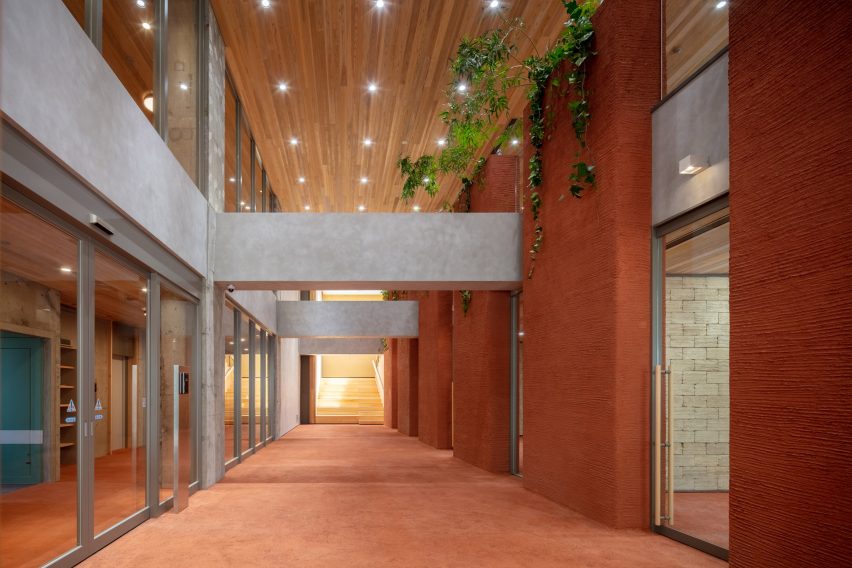
“While conventional renovations often limit their work to interior and envelope, this project proved seismic resistance, structural durability and energy efficiency,” said the studio.
Passing through a landscaped area with stairs and a ramp, entry is via a double-height entrance hall, with walls lined in reddish-brown earth plaster leading to a skylit wooden staircase.
The four floors of office spaces above all open onto the newly-created verandah spaces, lined with planters and finished with wooden floors.
On the top floor, the roof was opened up to create a skylit conference space with a floor of stepped wooden seating, which opens onto a large external terrace.
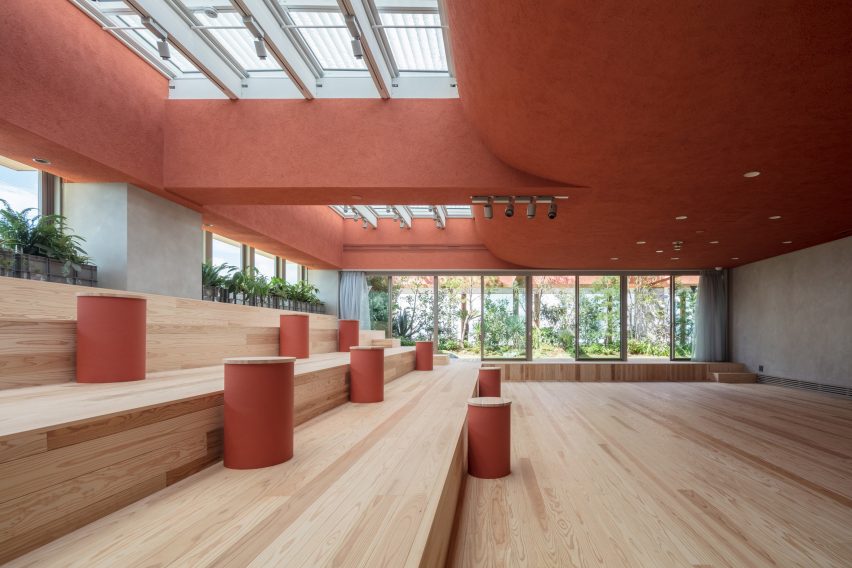
Waste materials were used throughout the project, with the earth plaster made using leftover soil from other Asanuma Corporation sites and crushed stone and wood mixed with plaster to create table tops.
“A building is a transit point in the flow of materials, and has the aspect of a ‘material bank’,” said the studio.
“It is important to use natural materials in a way that can be separated from artificial materials, so as to maximise the possibility of subsequent use, and to eventually return them to the earth.”
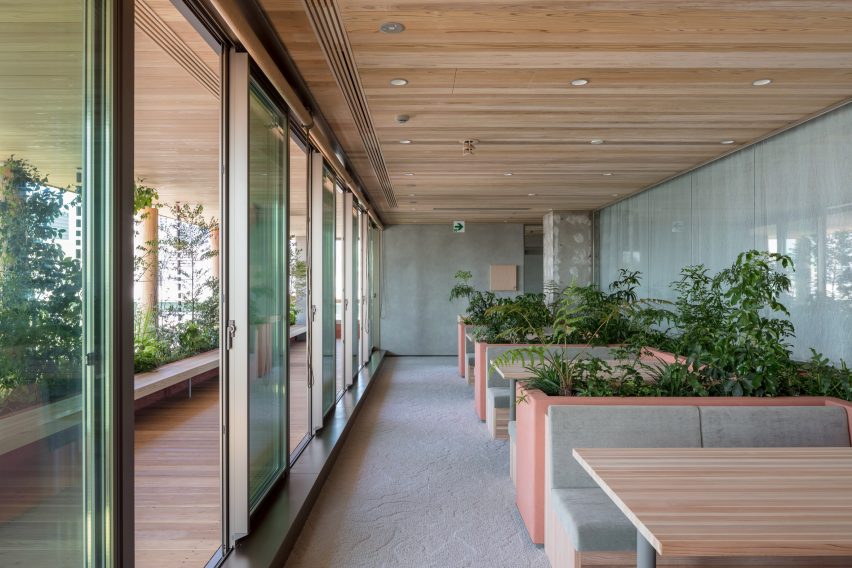
Other projects shortlisted in the rebirth category of Dezeen awards 2022 include the restoration of a lido in Cornwall by London practice Scott Whitby Studio, and the transformation of a metal foundry in New York into a theatre by CO Adaptive Architecture.
The photography is by Jumpei Suzuki.
[ad_2]


